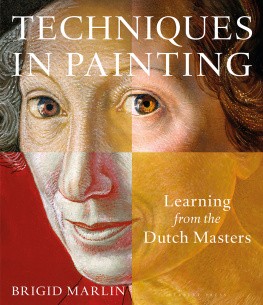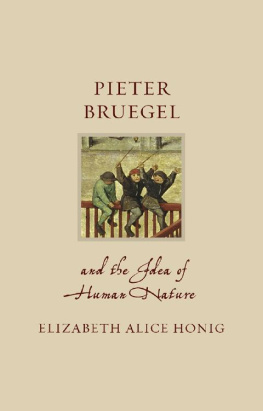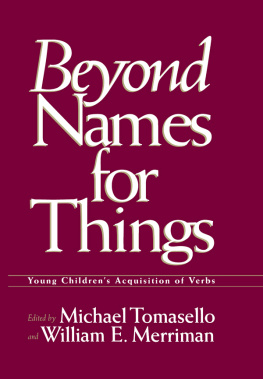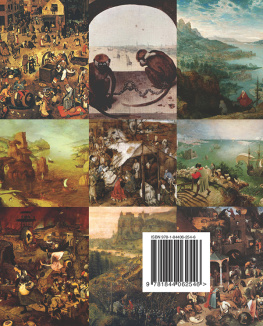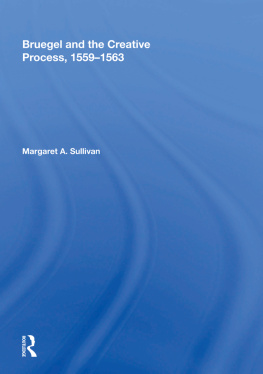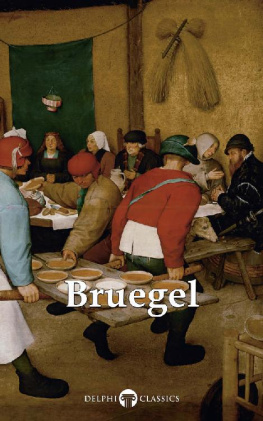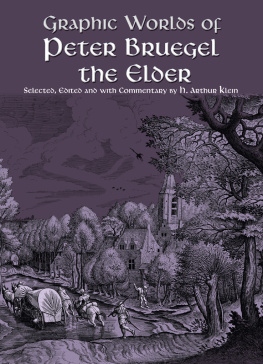Edward Snow - Inside Bruegel: The Play of Images in Childrens Games
Here you can read online Edward Snow - Inside Bruegel: The Play of Images in Childrens Games full text of the book (entire story) in english for free. Download pdf and epub, get meaning, cover and reviews about this ebook. year: 1997, publisher: North Point Press, genre: Children. Description of the work, (preface) as well as reviews are available. Best literature library LitArk.com created for fans of good reading and offers a wide selection of genres:
Romance novel
Science fiction
Adventure
Detective
Science
History
Home and family
Prose
Art
Politics
Computer
Non-fiction
Religion
Business
Children
Humor
Choose a favorite category and find really read worthwhile books. Enjoy immersion in the world of imagination, feel the emotions of the characters or learn something new for yourself, make an fascinating discovery.
- Book:Inside Bruegel: The Play of Images in Childrens Games
- Author:
- Publisher:North Point Press
- Genre:
- Year:1997
- Rating:5 / 5
- Favourites:Add to favourites
- Your mark:
- 100
- 1
- 2
- 3
- 4
- 5
Inside Bruegel: The Play of Images in Childrens Games: summary, description and annotation
We offer to read an annotation, description, summary or preface (depends on what the author of the book "Inside Bruegel: The Play of Images in Childrens Games" wrote himself). If you haven't found the necessary information about the book — write in the comments, we will try to find it.
Edward Snow: author's other books
Who wrote Inside Bruegel: The Play of Images in Childrens Games? Find out the surname, the name of the author of the book and a list of all author's works by series.
Inside Bruegel: The Play of Images in Childrens Games — read online for free the complete book (whole text) full work
Below is the text of the book, divided by pages. System saving the place of the last page read, allows you to conveniently read the book "Inside Bruegel: The Play of Images in Childrens Games" online for free, without having to search again every time where you left off. Put a bookmark, and you can go to the page where you finished reading at any time.
Font size:
Interval:
Bookmark:

Rainer Maria Rilke: New Poems (1907)
Rainer Maria Rilke: New Poems (1908): The Other Part
Rainer Maria Rilke: The Book of Images
Rainer Maria Rilke: Uncollected Poems
Rainer Maria Rilke: Diaries of a Young Poet (with Michael Winkler)
NOTES
BIBLIOGRAPHY
INDEX OF GAMES
GENERAL INDEX
| 1525 | Likely date of Peter Bruegels birth, in Brgel. near Breda in the northern part of Brabant. |
| 1551 | Admitted to the status of free master in the Antwerp Guild of St. Luke. |
| 1552 | Travels to Italy by way of France; draws Mountain Landscape with Italian-Style Cloister , his earliest surviving dated work, and one of many such mountain landscape drawings he would execute between 1552 and 1556. |
| 1554 | Returns to Antwerp from Italy via the Alps and the Rhine Valley, |
| 1555 | Enters the employ of Jerome Cock, printmaker at the Sign of the Four Winds. |
| 1556 | Designs the first of many satirical, Boschlike drawings for engraving by Cock: The Temptation of St. Anthony, Big Fish Eat Little Fish, The Ass at School. Begins the series The Seven Deadly Sins . |
| 1557 | The earliest surviving dated oil painting generally accepted as Bruegels: Landscape with Parable of the Sower. |
| 1558 | Many engravings published by Cock: The Seven Deadly Sins , a series of large Alpine landscapes, Everyman , The Battle of the Moneybags and Strongboxes, The Alchemist, Land scape with St. Jerome . |
| 1559 | Begins the series The Seven Virtues. Draws The Kermis at Hoboken. Paints The Netherlandish Proverbs and The Battle between Carnival and Lent. |
| 1560 | Changes his signature from BRUEGHEL to BRUEGEL. (His sons will adopt the earlier spelling.) Paints Childrens Games , the first work to bear this new signature. |
| 1562 | Leaves Antwerp, visits Amsterdam. Cock begins publishing a series of warship prints after drawings by Bruegel. (None of these drawings survives.) Bruegel paints: Dulle Griet, The Triumph of Death, The Fall of the Rebel Angels, The Suicide of Saul, Two Monkeys . From this year on, he devotes himself almost entirely to painting. |
| 1563 | Marries Maryken Coeck, then about twenty years old. Her mother is Maria Verhulst, a well known miniaturist; her father is the painter Peter Coeck van Aelst, Bruegels first teacher. They settle in Brussels. Bruegel paints the Vienna Tower of Babel. |
| 1564 | Bruegels first son is bornPeter II, who will become famous as Peter Brueghel the Younger or Hell Brueghel when he takes up painting after his fathers death, copying many of his fathers works. Bruegel paints The Procession to Calvary and The Adoration of the Magi . |
| 1565 | Bruegel paints, perhaps for Nicolas Jongelink, a series of seasonal landscapes: Hay-Making, The Harvest, Hunters in the Snow, The Dark Day. Also: Winter Landscape with Birdsnare, John the Baptist Preaching, Jesus and the Woman Taken in Adultery. |
| 1566 | Paints The Massacre of the Innocents and The Census in Bethlehem. Designs and etches Landscape with Rabbit Hunters. |
| 1567 | Paints The Conversion of St. Paul and The Land of Plenty. Probable date of The Adoration of the Kings in the Snow and the Rotterdam Tower of Babel. |
| 1568 | Bruegels second son is bornJohn I, or Jan, who will become a painter of renown (often known as the Velvet Brueghel) and a collaborator with Rubens. Bruegel paints The Birds Nester, The Parable of the Blind, The Misanthrope, Magpie on the Gallows, and The Cripples . Probable date (156869) of Peasant Dance and The Wedding Feast, as well as of the drawings The Bee-Keepers and Summer . Possible date of Landscape with Fall of Icarus. |
| 1569 | Bruegel dies on September 5. He is buried in the church of Notre Dame de la Chapelle in Brussels. His son Jan later commissions a painting by Rubens to decorate the tomb. |
Font size:
Interval:
Bookmark:
Similar books «Inside Bruegel: The Play of Images in Childrens Games»
Look at similar books to Inside Bruegel: The Play of Images in Childrens Games. We have selected literature similar in name and meaning in the hope of providing readers with more options to find new, interesting, not yet read works.
Discussion, reviews of the book Inside Bruegel: The Play of Images in Childrens Games and just readers' own opinions. Leave your comments, write what you think about the work, its meaning or the main characters. Specify what exactly you liked and what you didn't like, and why you think so.




